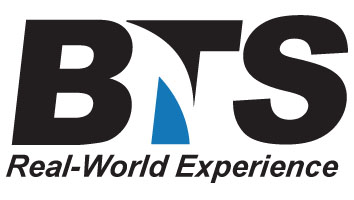| Hands-On ISDN |
 |
Module I Introduction
A. Traditional Networking Review
B. Today's Needs
C. Quiz
ModuleII ISDN Concepts
A. Service Concepts Common Channel Signaling
B. BRI Access Mechanisms
C. PRI Access Mechanisms
D. PRI Channelization
E. 'Custom ISDN' F. National ISDN
G. Quiz
Module III Physical Layer Overview
A. ISDN Reference Configuration
B. Reference Point and Component Comparisons
C. Quiz
Module IV Primary Rate Characteristics
A. AMI Line Code
B. Signal Regeneration
C. Framing
D. Extended Super Frame
E. PRI Alarms
F. D3 / D4 Framing
G. Pulse Density
H. HDLC Inversion
I. CSU Overview
J. Signaling Schemes
K. Quiz
Module V BRI Characteristics
A. Bandwidth Allocation
B. S / T interface Overview
C. ASI Line Code
D. S / T Interface Framing
E. S / T Interface Management Channels
F. Loopback Locations
G. Loop Code Definitions
H. Additional Loopbacks
I. S / T Interface Activation Signals
J. S / T Interface Activation Procedures
K. Maintenance Activation
L. S / T Frame Alignment Procedures
M. S / T Media Access
N. S / T Collision Detection
O. S / T Associated Wiring
P. Power Feeding
Q. U Interface Summary
R. 2B1Q Line Code
S. 2B1Q Frame Structure
T. Embedded Operations Channel Bits
U. Worst Case Access
V. EOC Messages
W. Quiz
Module VI Terminal Initialization and Frame Level Procedures – LAPD
A. OSI Model Overview
B. HDLC Functions
C. HDLC Class Definitions
D. SPIDs - Service profile identifiers
E. SAPs - Service Access Point Identifiers
F. Terminal Endpoint Identifiers
G. LAPD Frame Structure
H. LAPD Address Field
I. LAPD Control Field
J. Frame Types
K. Poll / Final Bit
L. Field Mapping Conventions
M. LAPD Timers and Parameters
N. LAPD USer to Network 'Handshake" Exercises
O. LAPD Frame Reject
P. Quiz
Module VII ISDN Layer 3 Protocol - Q.931
A. Layer 3 Protocol
B. Message Structure
C. Q.931 Header and Protocol Discriminator
D. Call Reference Value and Flag
E. Message Types
F. Message Associated User - User Information ( MA - UUI )
G. Call Associated Temporary Signaling Connections ( CA - TSC )
H. Non Call Associated Temporary Signaling Conns ( NCA - TSC )
Information Element Field
I. Codeset 0
J. Codeset 6
K. Overlaid Channel Provisioning
L. Call by Call Provisioning ( CBC )
M. Channel Hunt Scheme
N. Channel Negotiation
O. Quiz
Module VIII ISDN Numbering - E.163 / E.164
A. Definitions
B. World Zones
C. Field Descriptions Time Table
D. Related Recommendations
E. Quiz
Module IX Packet Mode Access
A. Circuit Switched Access to an Access Unit ( AU )
B. Permanent Packet Mode Transport Services
C. On Demand Packet Transport Services
D. TE 1 Example
E. TE 2 Example
F. X.121 Numbering Plan
G. X.121 Test Numbers ( sample )
H. Type of Address / Number Plan Info. ( TOA / NPI )
I. Quiz
Module X. Rate Adaption
A. Explanation
B. BONDing and MLPPP
C. MLPPP+ and BACP
D. DMI Rate Adaption Types
E. Formats for DMI Modes 0 and 1
F. DMI Mode 2
G. Mode 2 Handshake Messages
H. DMI Mode 3
I. V.110 Rate Adaption
J. Intermediate Rate Framing Convention
K. E Bit Use for V.110
L. Bearer Channel Intermediate Rate Identification
M. V.110 Example
N. V.120 Rate Adaption
O. V.120 Frame Structure
P. Logical Link Identifier ( LLI )
Q. Control Field Description
R. Example of V.120 Setup
S. V.120 Header and Control State Octets
T. Quiz